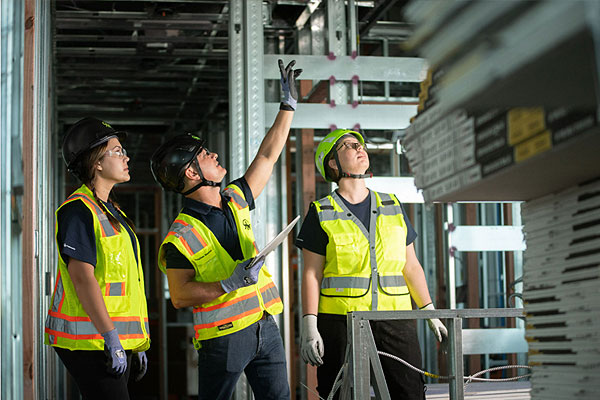Interactive and Engaging
Orientation & Training Services
SAVI tailors EHS training to meet your company’s requirements and promote your employees’ safety and well-being. Properly
trained employees can identify health and safety risks on the job and minimize accidents and injuries. We’ll help you stay
current with EPA and OSHA training requirements and can save you the time and expense involved with creating in-house
training programs.
To ensure participant retention and comprehension, we facilitate our training in a manner that is engaging and interactive.
We can provide training at one of our facilities or can schedule the training at a location of your choice.
Did You Know?
Every organization needs environmental, health and safety training. According to the U.S. Bureau of Labor
Statistics, each year businesses report the following data on workplace fatalities and injuries:
EHS training helps your leadership team and employees commit to a safety-conscious environment.

Orientation & Training
SAVI EHS Courses
Orientation & Training requirements are not one size fits all.
The hazards that employees will come across in the construction field will differ from those working in a manufacturing plant.
Safety training requirements can even vary within a company.
A manufacturing plant and office employees should receive different safety training from the team members working directly on the plant floor.
Here is a list of training courses that we offer:
Confined Space Awareness
Creates awareness of confined-space entry and exit, conditions, hazards, and precautions that promote safety
First Aid/CPR/AED
Equips employees to render basic first aid or CPR or use an automated external defibrillator (AED)
Lockout/Tagout
Teaches safeguards for electrical, chemical, thermal, and other accidents through precautions that disable equipment or machinery and prevent releasing potentially hazardous energy
Powered Industrial Vehicles
Informs employees about hazards unique to forklift operation, OSHA recommendations, and how to protect themselves and other employees
Hazard Communication
Educates participants on how to classify and label hazardous chemicals and obtain datasheets for notifying and training employees
Hearing Protection
Alerts employees on how to recognize noise hazards, protect their hearing, and prevent hearing loss
Ladder Safety
Teaches common risks and causes of injury and best practices for ladder safety
Lead and Asbestos Awareness
Teaches participants how to recognize lead and asbestos. Educates employees about the importance of protective clothing, handling, and disposal to minimize health risks
Machine Guarding
Reviews OSHA machine-guarding standards and how to recognize hazards and implement solutions to protect the operator and others in the vicinity
New Hire Orientation
Establishes a safety foundation for your new employees to help them understand your organization’s policies and procedures
Personal Protective Equipment
Ensures employees understand PPE essentials, including when and how to wear, remove, maintain, and dispose of it
Respiratory Protection
Informs employees about respiratory risks and how respirators can protect them from vapors, dust, gases, and other elements
Scaffolding
Specifies scaffolding requirements, equipment, use, hazards, maintenance for construction support, worker access, and fall protection
Trenching and Excavation
Teaches how to recognize and reduce hazards, prepare to prevent cave-ins, enter and exit safely, and work safely
Fall Protection
Ensures workers understand slip, trip, and fall hazards and current technology, standards, and best practices for fall protection
Bloodborne Pathogens
Defines bloodborne pathogens and who are at risk. Teaches the importance of implementing an exposure control plan and how employees can protect themselves
Crane Rigging and Signaling
Teaches rigging and signaling safety, including precautions, training personnel, and wearing appropriate protective equipment. Emphasizes the importance of communication, risk assessments, and establishing emergency procedures
Electrical Safety (NFPA 70E)
Identifies electrical hazards and teaches safe work practices to avoid arc flash or burst, shock, or electrocution that can result in severe injury or death.


